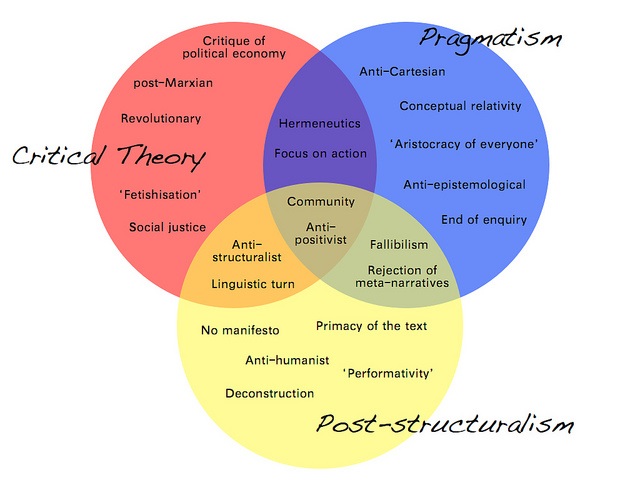Post-Structuralism vs Structuralism
The difference between Post-Structuralism and Structuralism is simple to understand. Structuralism and Post-Structuralism are two different literary movements. Structuralism proposes that the world should be understood through structures. For example, let us take language. A language should be understood as a structure because the individual words gain their meaning due to the existence of the structure. Structuralists emphasized the idea that truth and reality were to be identified within the structure. Post-Structuralism, on the other hand, criticized this foundation of structuralism. According to Post-Structuralism, there were no realities or truths; all such elements have to be understood as constructions. This article attempts to highlight the differences between the two movements through an understanding of each movement.
Key Takeaways
- Structuralism proposes that the world should be understood through structures, while Post-Structuralism criticizes this foundation.
- Structuralism emphasizes the existence of a structure in understanding various phenomena, while Post-Structuralism is believed to be historical and focuses on the analysis of history to understand concepts.
- Structuralism was pioneered by Claude Levi-Strauss, whereas Post-Structuralism’s foundation was laid by the ideas of Ferdinand de Saussure, Claude Levi-Strauss, and Jacques Derrida.
What is Structuralism?
Structuralism, as a theoretical perspective of understanding the society and the world at large, began in the 1960s in France. It was Claude Levi-Strauss who pioneered Structuralism. This can be understood as an approach that highlights the existence of a structure in phenomenon. Structuralists such as Saussure used language in order to highlight the existence of a structure in different phenomena. According to him, a language is made up of arbitrary elements. These elements do not have any individual meaning. It is through the system that these elements derive meaning. Through this Structuralism brought out the concept that there were no hidden realities, but the reality was to be identified within the premises of the structure. Binary opposition was one of the theories of Structuralism. This highlighted that certain concepts are in opposition such as male and female. However, the ideas of structuralism surpass the linguistic framework and were applied in other fields as well. For example, the influence of Structuralism was to be seen in Anthropology and also in Psychology. Specially, the ideas of Foucault, who stressed that concepts such as ‘madness’ have social connotations and also Jacques Lacan, who stated that the subconscious was a replica of a system, emphasized the accuracy and validity of Structuralism.
What is Post-Structuralism?
Post-Structuralism can be understood as a criticism of Structuralism. Unlike Structuralism, which brought the idea of the existence of a structure, Post-Structuralists rejected this. They believed that in order to understand something, it was necessary to study not only the subject itself, but also the system of knowledge, since it can be misinterpreted. The foundation for this was laid by the ideas of Ferdinand de Saussure, Claude Levi-Strauss, and Jacques Derrida. Post-Structuralism is believed as historical whereas Structuralism is believed to be descriptive. This is because Post-Structuralism engages in an analysis of history to understand concepts. For example, the interpretation of concepts in the past can greatly differ from the present. Post-Structuralists pay attention to these changes.
What is the difference between Post-Structuralism and Structuralism?
- Structuralism emphasizes the existence of a structure in understanding varied phenomena.
- Post Structuralism can be understood as a criticism of Structuralism.
- Post-Structuralism is believed as historical whereas Structuralism is believed to be descriptive.
